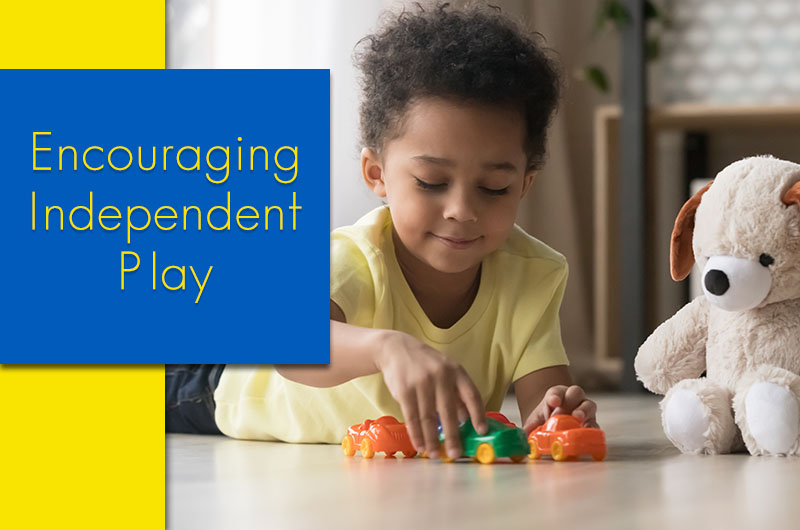6 Ways to Promote Independent Play in Your Child


Before this time of quarantine, parents had multiple roles. Today, these roles are more significant and now require more and more of our time. Working parents are being asked to continue to work their full-time hours, watch children during the day, and then become homeschool teachers all at the same time.
This is a very difficult time for parents and caregivers as you literally juggle it all.
I did not even include keeping up with feeding children 3 meals a day and all the laundry now associated with it. Right now, you likely need resources that give you time to accomplish some of these tasks without little people saying your name 20 times. This is where indenpendent play can help!
The National Institute of Play defines play as an activity that is intrinsically motivating and rewarding with many developmental benefits. For parents and caregivers, independent play can mean 10 minutes of getting some work done or completing tasks around the home. Independent play does not always come naturally for children, but as parents, we can set up the home for success.
Here are 6 ways you can encourage independent play:
- Don’t put out every single toy your child owns.
Pull some back into a closet and take them back out after a couple of weeks. The toy will seem novel without having to spend a bunch of money on new toys.
- Make a “craft bin."
This is one of my personal favorites! Take old magazines, empty toilet paper and paper towel rolls, crayons, markers, scrap paper, stickers—whatever you can find around the house—and stick it in a box. There are no rules! Let your child create with it! In my house, it stays in one spot and that is the only place they can use it. Give your kids freedom to be messy and create whatever they want. The only rule, they can only use what is in the bin!
- Be okay with mess during independent play time.
It will happen, but it will be worth the time you gain to get a couple minutes to yourself and get a couple items checked off the to-do list. Once you are done, turn on some music and make clean-up a fun game.
- Set a timer.
Let your child know that there is a beginning and end to independent play. The ability to play independently does not just happen. Start with small increments of time and then increase the time to increase your child’s stamina.Start with 5–10 minutes. Add 5 minutes each time you want them to play independently from there. Some days are going to be better than others, and there will be times they need more help and reminders than others. That is okay!
- Do not critique their play.
Let them come up with stories and determine the roles of everyone in the play. They might use necklaces in a pot and pretend to make cookies with it, or use legos and blocks to build a fortress for the magical puppy who saves the day (these are real storylines from my household). Let them create and use what they need. Please intervene if their play seems unsafe or appears dangerous (which can and does happen).
- Once the day is done, set aside specific time to play with your child.
Make it special and make it a priority. You might even take turns picking the activity!
There are many developmental benefits to independent play.
Independent play is not only about getting some time to check off items on the to-do list. Benefits include:
- Increasing creativity and imagination
- Building executive function skills
- Increasing social participation
- Learning to express and control feelings
- Setting and following rules
- Being flexible with change and compromise
- Developing overall gross motor and fine motor coordination and strength
This is a difficult time. Hopefully, these tips can help you get a couple minutes to yourself and allow your child to grow and develop through independent play. And more importantly…HAVE FUN!!
References:


